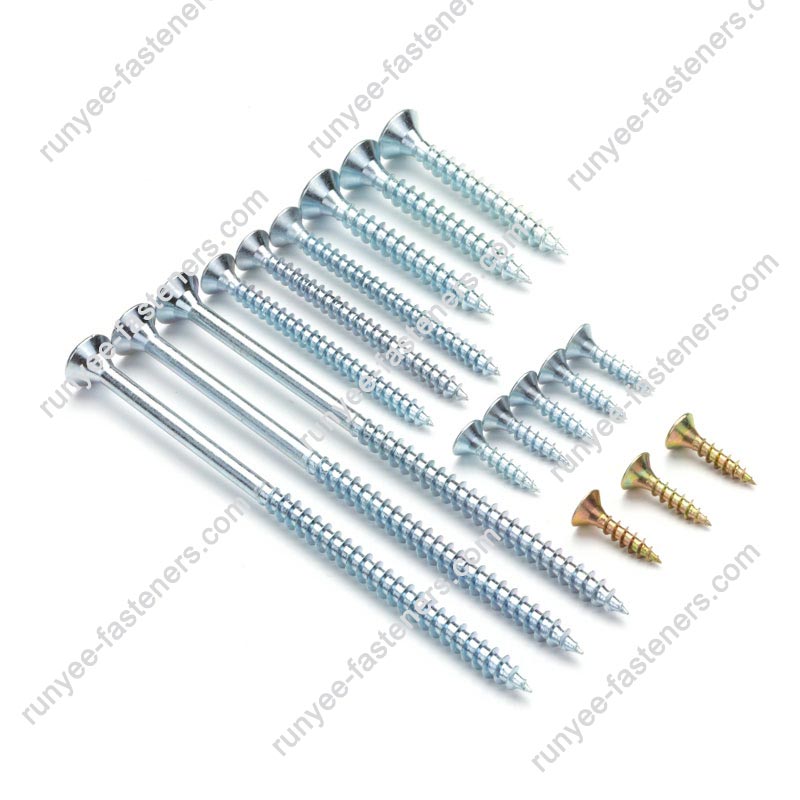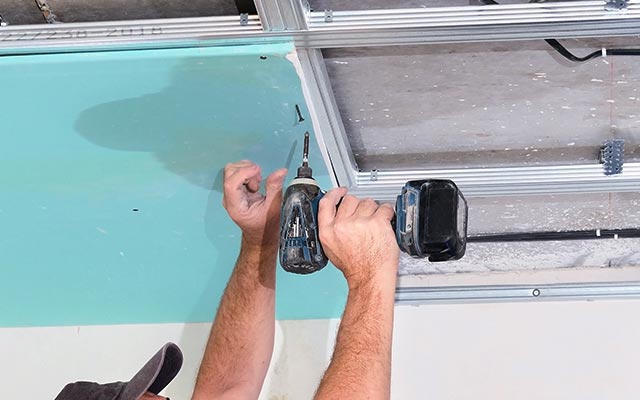What Makes Chipboard Screws the Choice for Woodworking and Construction?
2025-09-26
Chipboard screws are specialized fasteners designed to provide strong, secure joints in chipboard, MDF, and other types of engineered wood. Unlike standard wood screws, which may split or loosen in softer boards, chipboard screws have a unique thread profile and sharp tips that allow them to bite firmly into wood fibers without pre-drilling. This makes them a practical and reliable choice for carpenters, furniture makers, and construction professionals.
Key Characteristics of Chipboard Screws:
-
Thread Design: Deep and coarse threads for strong grip in softer materials.
-
Head Style: Countersunk head for a flush finish on boards and panels.
-
Drive Type: Commonly available in Phillips, Pozidriv, and Torx to reduce cam-out.
-
Material Strength: Manufactured from hardened steel with various surface coatings.
-
Versatility: Suitable for furniture assembly, flooring, cabinetry, and panel installations.
The role of chipboard screws goes beyond fastening two boards together. They determine the overall durability, safety, and aesthetic appeal of a project. Using the wrong fastener can lead to instability, squeaking furniture, or premature wear. By contrast, the right chipboard screw ensures tight joints that can withstand pressure and long-term usage.
When customers search for chipboard screws, their concerns typically include strength, corrosion resistance, installation ease, and compatibility with tools. Addressing these aspects is essential for making informed purchasing decisions.
Why Should You Choose Chipboard Screws Over Other Fasteners?
When comparing fasteners, many people ask: why not use standard wood screws or nails? The answer lies in performance and reliability. Chipboard screws are engineered specifically for fiberboard materials, which require enhanced thread design to avoid splitting or cracking.
Benefits of Chipboard Screws:
-
Superior Grip in Chipboard and MDF:
Standard screws often strip the board material, while chipboard screws cut in cleanly, providing a tight hold. -
Reduced Splitting:
With sharper points and self-tapping features, chipboard screws minimize splitting, even near board edges. -
Time Efficiency:
They allow direct screwing without the need for pre-drilled pilot holes, saving valuable time during large-scale assembly. -
Professional Finish:
Countersunk heads sit flush with the surface, giving furniture and panels a clean, seamless appearance. -
Durability and Coatings:
Chipboard screws are available with zinc-plating, yellow-passivation, or black oxide finishes that improve corrosion resistance and match different woodworking aesthetics.
Comparative Strength Table
| Parameter | Chipboard Screw | Standard Wood Screw | Nails |
|---|---|---|---|
| Thread Grip | High | Medium | Low |
| Resistance to Splitting | Strong | Moderate | Weak |
| Installation Speed | Fast (self-tap) | Moderate | Fast |
| Surface Finish | Flush & Clean | Slightly Raised | Visible |
| Corrosion Protection | Coated Options | Limited | None |
| Best Use Case | Engineered Wood | Natural Wood | Rough Framing |
The table shows why chipboard screws remain the first choice for professionals who work with MDF, chipboard, and laminated panels. Nails and standard screws may serve general purposes, but they fall short in precision applications.
How Do Chipboard Screws Improve Work Efficiency and Project Quality?
Efficiency is critical in both small workshops and large construction sites. Every minute saved on assembly translates into faster turnaround and lower costs. Chipboard screws provide multiple efficiency benefits that go beyond just fastening.
How They Improve Efficiency:
-
Self-Tapping Design: Eliminates the need for drilling pilot holes, especially in softer wood materials.
-
Reduced Tool Slippage: Torx and Pozidriv drives allow higher torque without damaging the screw head.
-
Less Material Waste: With reduced splitting, fewer boards are wasted, lowering overall project costs.
-
Uniformity in Production: Screws come in consistent sizes, which ensures repeatable accuracy in automated assembly lines.
How They Improve Project Quality:
-
Stronger Joints: Furniture assembled with chipboard screws remains stable even under stress.
-
Long-Term Durability: Coated screws resist rust, making them suitable for humid or semi-outdoor environments.
-
Neat Aesthetics: Flush countersunk heads contribute to polished surfaces.
-
Noise Reduction: Well-secured panels minimize squeaks in flooring or cabinetry.
Common Applications:
-
Furniture Manufacturing: Beds, cabinets, wardrobes, and bookshelves.
-
Flooring Installation: Subfloor panels and laminated surfaces.
-
Interior Design: Partition walls, decorative panels, and fixtures.
-
DIY Projects: Home repairs, shelving units, and garden woodwork.
Every application benefits from the precision and strength that chipboard screws bring. Professionals recognize that using the right screw can prevent callbacks, reduce repair costs, and enhance customer satisfaction.
What Should You Consider When Buying Chipboard Screws?
Selecting the correct type of chipboard screw ensures project success. Buyers must consider several technical parameters and real-world conditions before making a decision.
Key Buying Parameters:
-
Length & Diameter: Choose based on board thickness. Common lengths range from 12mm to 100mm.
-
Head Type: Countersunk is most common, but flat or pan head options are available for specific uses.
-
Drive Type: Phillips, Pozidriv, and Torx are widely used; Torx offers superior torque transfer.
-
Material & Finish:
-
Zinc-Plated: General indoor use.
-
Yellow-Passivated: Aesthetic finish with extra corrosion resistance.
-
Black Oxide: Ideal for dark furniture surfaces.
-
-
Packaging: Bulk options for manufacturers or small packs for retail customers.
Practical Buying Advice:
-
Always match screw length to at least 2.5 times the thickness of the top board for maximum strength.
-
For furniture assembly, choose coated screws to prevent rust in humid environments.
-
For automated or large-scale production, opt for Torx drive screws to reduce tool wear and worker fatigue.
Frequently Asked Questions (FAQs)
Q1: What is the difference between a chipboard screw and a wood screw?
A chipboard screw has deeper threads and a sharper point designed specifically for engineered woods, while wood screws are more suitable for natural solid wood.
Q2: Why do chipboard screws come with different coatings?
Coatings such as zinc, yellow passivation, or black oxide provide corrosion resistance and aesthetic compatibility, ensuring longer life and a better match with furniture finishes.
Q3: Do chipboard screws require pre-drilling?
In most cases, no. Their self-tapping design allows direct installation, although pre-drilling may be helpful for very dense or laminated boards.
Chipboard screws play a vital role in ensuring the strength, durability, and appearance of woodworking and construction projects. Their specialized design provides unmatched performance in engineered woods, making them superior to traditional fasteners. Whether for small DIY projects or large-scale furniture manufacturing, chipboard screws deliver efficiency and quality that professionals trust.
At RUNYEE factory, we specialize in producing high-quality chipboard screws with precision engineering, diverse coating options, and bulk supply solutions tailored to professional needs. Our commitment to quality and customer satisfaction makes us a trusted partner for businesses worldwide.
For bulk inquiries, technical support, or customized orders, contact us today and let RUNYEE factory support your next successful project.




























